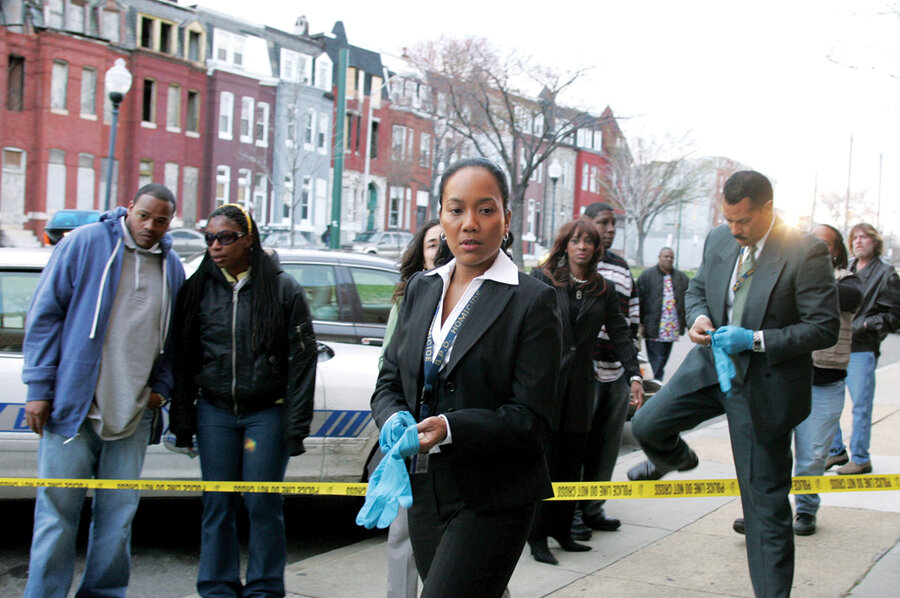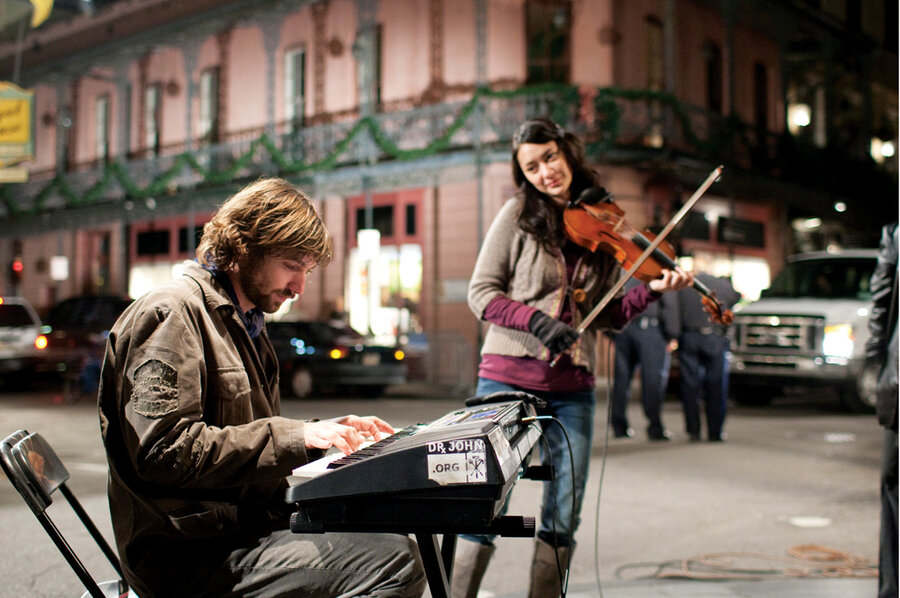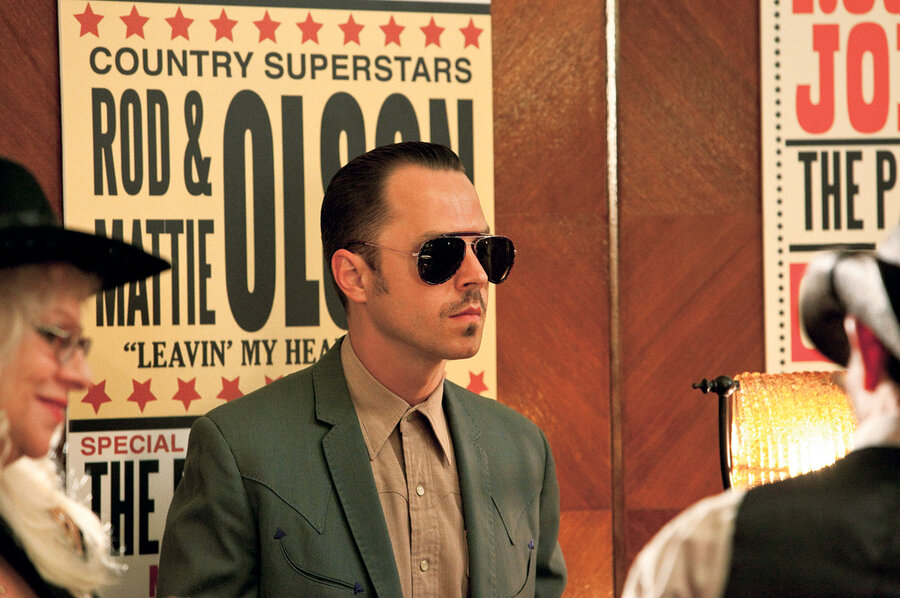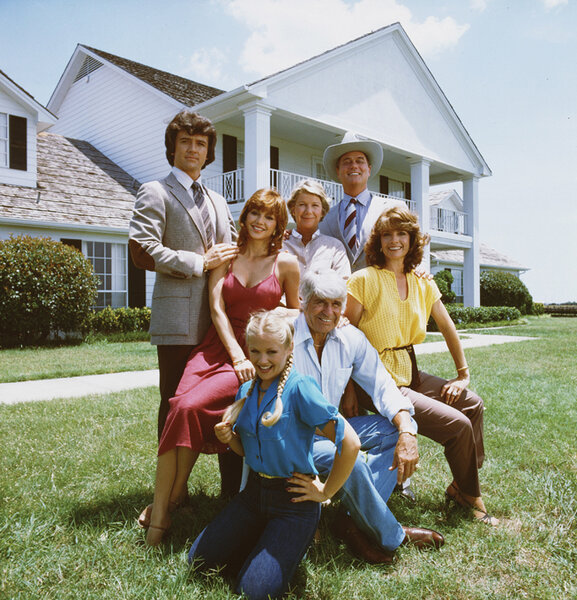A character not listed in TV dramas: The city itself
| Los Angeles
Casting for the new NBC spinoff "Law & Order: Los Angeles" is well under way, but perhaps the most important role was filled the moment the franchise opted to move west.
Around the writers' room of the just-canceled, 20-year-old mother ship of the crime series, it had long been an article of faith that Manhattan itself was "a seventh character," says executive producer René Balcer, who cohelms the team behind "LOLA," as the new iteration is known. And so, as the show's architects construct a new vision for the crime-and-punishment format in southern California, the City of Angels is already a potent presence, informing and helping to shape the show's tone, story lines, and other characters.
"We will go into neighborhoods you haven't seen before," says Mr. Balcer, not the well-worn haunts of a relatively narrow swath of real estate between Hollywood and Beverly Hills, but gritty enclaves such as Sylmar and San Pedro, to tap the residents and events unique to those districts. "The city will speak through all of these characters."
A strong sense of place has always enriched a good yarn. One can imagine a long-ago ancestor describing a firelit cave in detail. But the modern city has taken on a particularly powerful identity, says Elizabeth Richmond-Garza, professor of comparative literature at the University of Texas at Austin. For centuries, she points out, it was possible to pinpoint a person's parentage, education, and aspirations with remarkable clarity. But as industrialization forged new, teeming urban cores, cities have evolved as "an almost malevolent force," she says, exemplified in the Baltimore-based cable street drama, "The Wire."
The careful use of urban landscape detail, as well as tales that resonated with the zeitgeist of a city in social and economic free fall, turned Baltimore into an unforgettable "character," says Robert Thompson, founder of the Bleier Center for Television and Popular Culture at Syracuse University in New York. "I can think of few better examples of a city used to not only contextualize a story but be so totally integrated as a character," he says, adding that it is a perfect example of "the city as a repository of identity." Writer-creator David Simon, who brought the Baltimore stories to life, has moved on to yet another iconic American city in the new HBO series "Treme," which is centered on post-Katrina New Orleans.
"This is a city that is essential in the American psyche," he told reporters in January, prior to the show's launch. "It is the best and worst in American culture, as well as the birthplace of its most iconic export: jazz. African rhythm and the pentatonic scale meeting European instrumentation and arrangement comes from about 12 square blocks in New Orleans," he says. "And yet," he adds, "the nation witnessed the city's near-destruction."
"It's coming back on its own terms as best as it can with a lot of concern from some quarters but a lot of indifference from much of the country," he says. "The Wire" implied what was at stake in the American city, he says, but "Treme" is actually "an examination of what it is, what living as disparate and different people compacted into an urban area can offer."
Cities can play the heavy in lighter fare as well. New York was a sparring partner in the observational humor of "Seinfeld," and an elusive lover in the HBO romantic comedy "Sex and the City," says Mr. Thompson. No television city has wielded a stronger psychic presence than the fictional Mayberry, N.C., in "The Andy Griffith Show," he says. "That embodiment of all our values in postwar America spoke to all of us; it was palpable and overwhelmed everything, even Barney Fife."
In "Memphis Beat," a TNT police drama that debuted this summer, the town that has become synonymous with Elvis Presley is also a microcosm of America, says cocreator Liz Garcia. "It is a fusion of black and white culture," she says. At the same time, she adds, it's a tourist magnet for music lovers as well as an industrial city that has fallen on hard times.
The show's main character is passionate about both Elvis and the city he made famous. In the pilot episode, the beat cop comes across an elderly, homeless woman suffering from dementia. As he searches for her identity, it becomes clear that she is the long-ago radio DJ who first introduced him to Elvis's music. "His fight to restore her to her rightful place becomes a metaphor for the city and its lost innocence in a way," says Ms. Garcia. "He wants to save her and the soul of the city."
The show grew from a love of Southern culture and a desire to bring an authentic Southern story to the small screen. The trick, says Garcia, is detail – lots of it. "We did an entire show about barbecue, the rub, the sauce, all of it, because it is so important in that town and food is such a key part of Southern life," she adds.
Rich, vivid specificity is the key to making a city sing, says novelist Oscar Casares. The depth of detail can provide a milieu from which characters draw a deeper sense of reality. The precision and extent of real-life detail "can often buy credibility for the fictional characters," he adds.
Cities can fight back. When the "CSI:" franchise unveiled a New York version after the success of the original based in Las Vegas and then one in Miami, the relationship got off to a rocky start. The initial shows were dark, even creepy, and the ratings faltered. But, says show runner Pam Veasey, "the city was much more than that and she let us know it."
The writing team rebooted its idea of the city to include broader stories with lightness, humor, and pathos. "She is heroic, sexy, and substantial," says Ms. Veasey with a laugh, and as the show heads into its seventh season, "we are still finding entirely new corners we and even people who have lived there for their entire lives have never heard of."
TNT's "The Closer" features an outsider trying to crack the city, personally and professionally. "New York, Paris, London, in all those cities people live much of their lives outside their personal space," says executive producer James Duff. But in L.A., life unfolds out of sight. "The city, like the case she is working, is a big mystery she has to solve," he says, adding, "even just getting around is a problem in a city with little public transportation."
Cities indeed have "souls," says James Farrelly, director of film studies at the University of Dayton, Ohio. "Setting is a prime element in establishing personal identity and a sense of place. What the ancients called genius loci [spirit of the place]," he writes in an e-mail. Writers such as James Joyce often use real locations – Dublin, for instance – that become shadowy characters in themselves. Switching locales would violate the integrity of the artistic vision. But in the world of TV show franchises, the sense of place is more a marketing device than a need to plumb the "spirit" of a particular city.
"There is certainly no strong sense of place in [producer Dick] Wolf's current move," Mr. Farrelly adds, "or in the decision made by producers of NCIS or of the CSI franchises to expand. Follow the money is the prime mover here."
Business strategy or not, television historian James Von Schilling applauds the recent outcropping of less-familiar skylines on the small screen. He points out that in the early days of the medium, live broadcasts emanated from more than just New York and L.A., but the consolidation of the industry on both coasts eliminated a natural regionalism.
But with the increasing pressure from basic and premium cable programming, "we're seeing more unusual cities being explored and that makes the television culture richer," Mr. Von Schilling adds.









